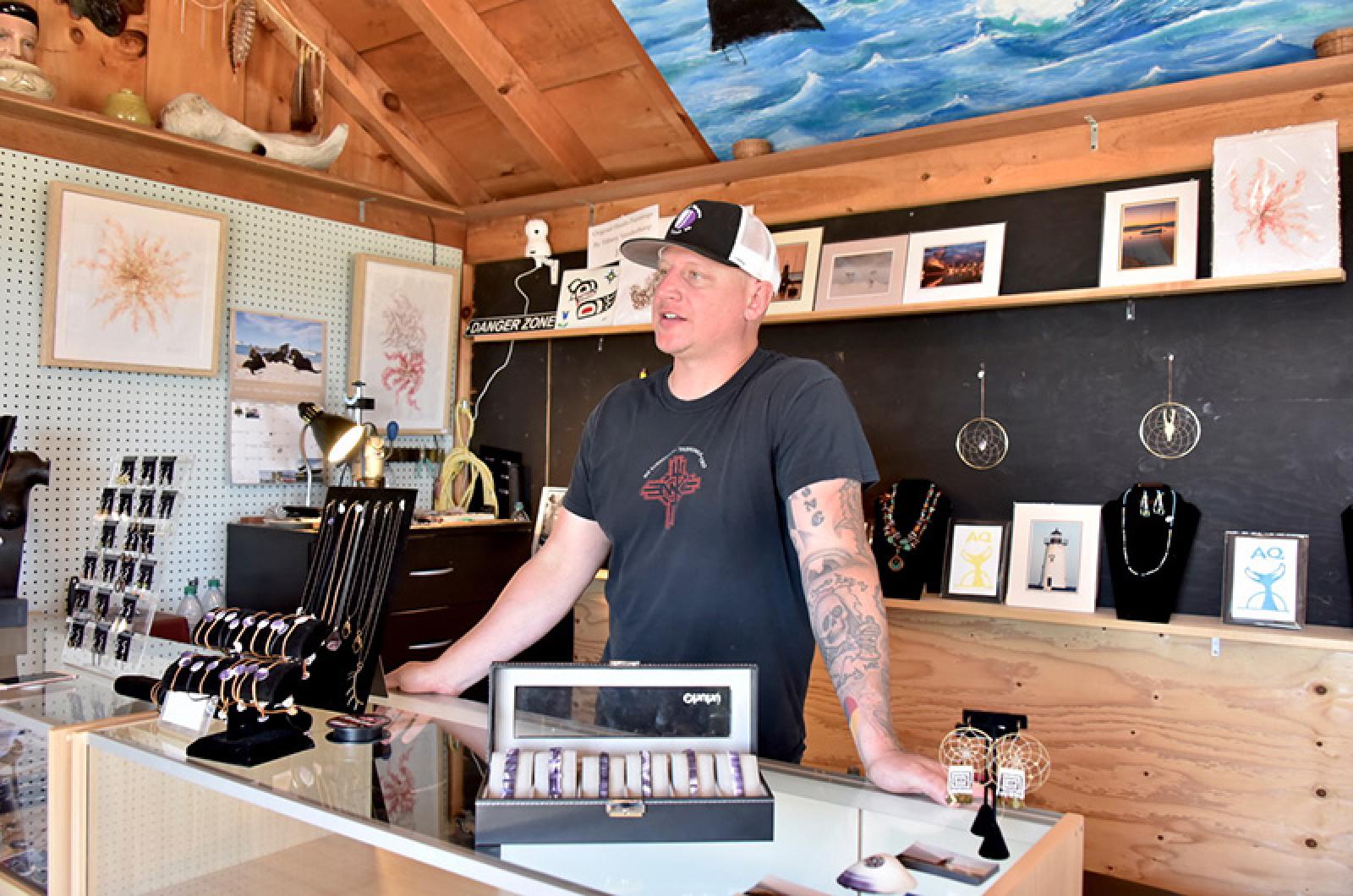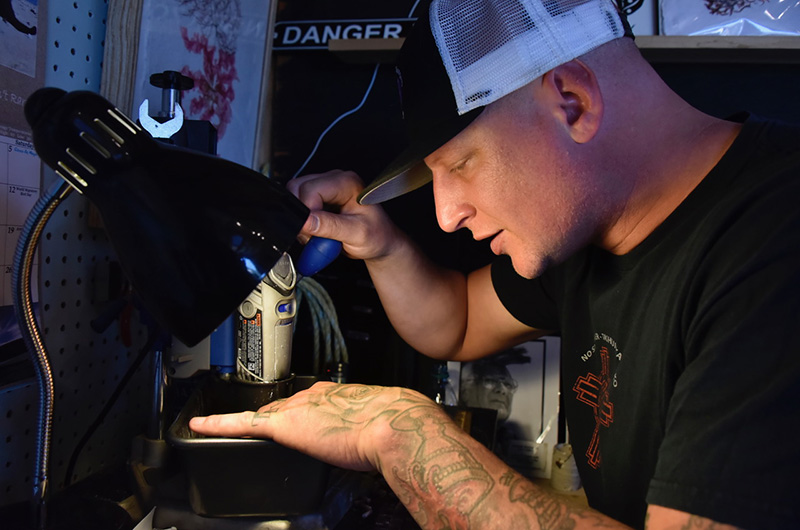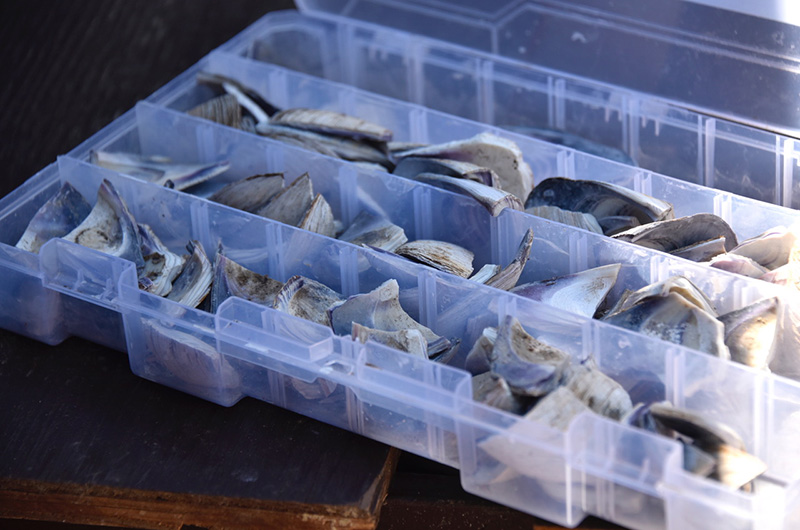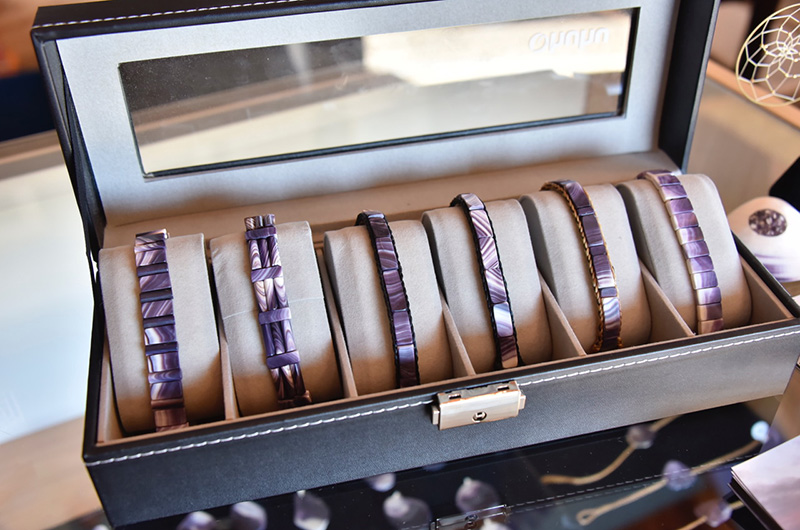The creation of wampum jewelry is a multi-layered process. For Jason Widdiss the labor begins at Menemsha Pond where he sets out on his boat to collect quahogs with a bull rake, a claw shaped basket with three-inch, dagger-like teeth. He then shucks his harvest, carefully cleaning the inside of the shells to prepare them for carving.
“The main muscle is where you can actually shape it,” Mr. Widdiss says, his finger tracing the deep purple portion of the shell’s inside. “If you shape outside of that too much, it starts to chip.”
Using a diamond saw at his home, Mr. Widdiss slices through the shells, fashioning them one by one into the shapes he desires. He refers to the rough clips of quahaugs as “blanks,” the halfway point between a freshly harvested shell and the final product. He’s crafted circles, rectangles, hearts, even the zig-zagged shape of the Vineyard out of those blanks. Some of the pieces are large, while others measure no bigger than his thumbnail.
“Sawing is the really messy part so I try to do it outside in the nice weather,” he says. “You just get covered in the dust.”
Mr. Widdiss says he spends two to three hours in the morning with his saw before he comes into his shop, Wayward Wampum at the Aquinnah Circle, which he took over from his father and fellow wampum artist, Donald Widdiss, four years ago. In the shop his afternoons are filled with drilling. With the help of a Dremel drill wedged behind the two front counters, he drills tiny holes into the wampum beads, the final step before stringing them into a necklace, bracelet or set of earnings.
“Wampum was originally used to tell a story,” he says. “It’d be a birth, a death, a marriage, a treaty with another tribe. But it’s also given as a sign of respect and honor. Which is why a lot of times I try to explain that to people.”
Gripping a wooden clamp, the same one he’s been using for 15 years, Mr. Widdiss squeezes the bead into place, before placing it into a bath of water, coolant and animal fat. The drill then pokes through the wampum, a delicate process controlled by a lever in his right hand.
While the drilling takes only a few seconds, Mr. Widdiss says he must work with extreme care so as not to crack through the shells. He uses the clicking of the drill’s gears as a guide to know when the beads are finished.
“Every year is a learning experience. But I try to have as many pieces as possible in the store as I can. It’s a labor of love.”
Once the shells are drilled, Mr. Widdiss bevels the holes to ensure they don’t cut the Fireline—a smooth, pliable brand of fishing line that he weaves through the beads to connect to the bracelet’s sinew, a sturdy nylon cord coated in beeswax.
“I kind of adapted the sinew to my lifestyle to test it out,” he says. “I was always skateboarding, working out and boxing and it just really held up.”
The sinew bracelets are Mr. Widdiss’s signature, each containing a row of purple and white wampum beads. Customers filter through the store, examining both the jewelry and Mr. Widdiss’s drilling.
“I’m not just making pretty jewelry out of shells,” Mr. Widdiss says. “Every bead I make is a contribution, on behalf of my family, and to the cultural preservation of my people, the Aquinnah Wampanoag.”
Wayward Wampum is located at 17 Aquinnah Circle, Aquinnah or visit etsy.com/shop/JasonWiddissWampum.










Comments (2)
Comments
Comment policy »